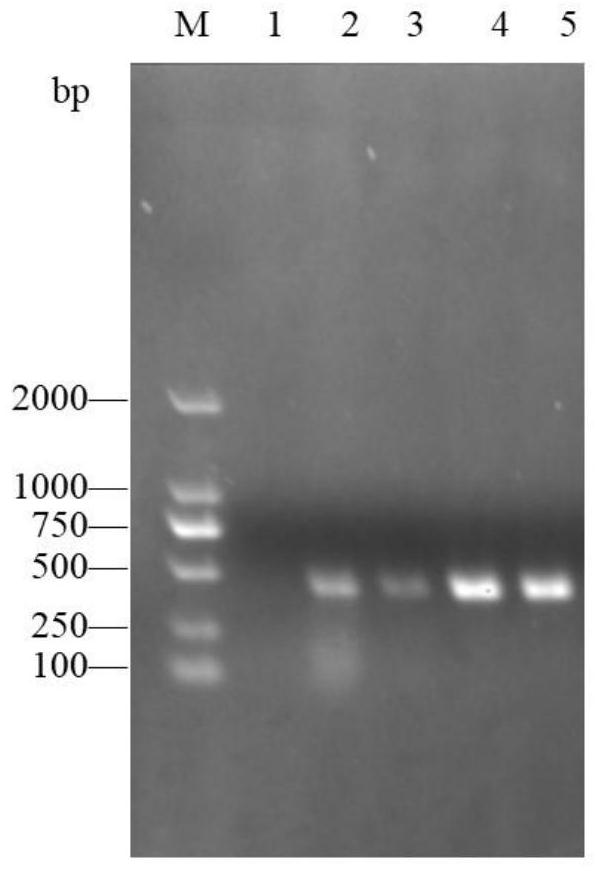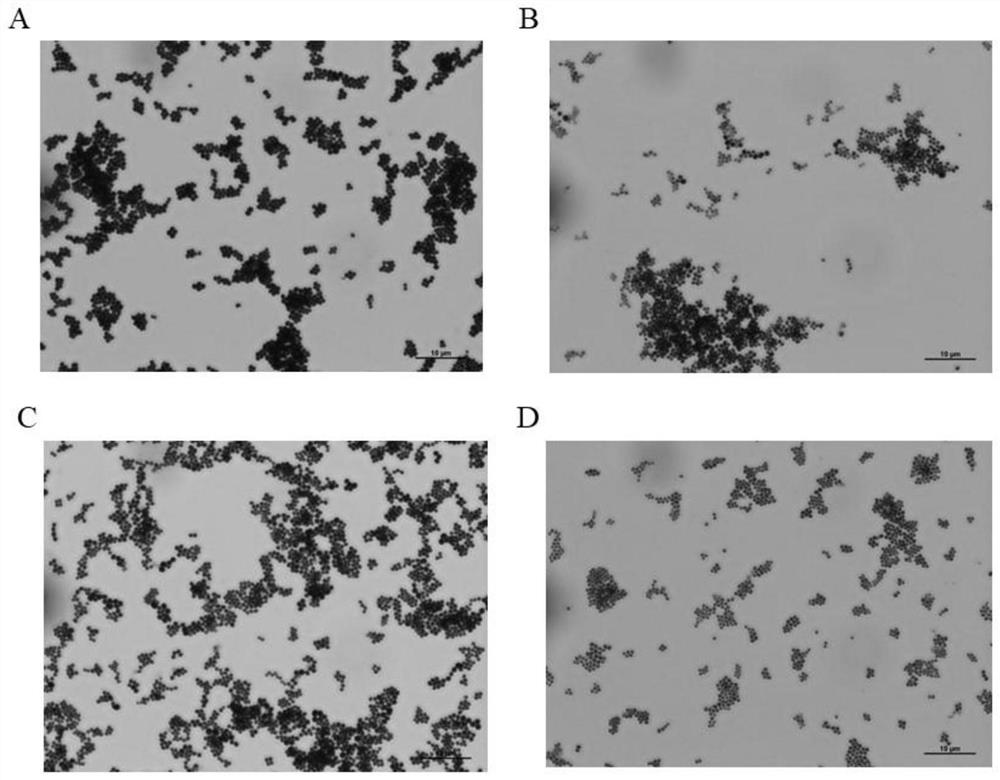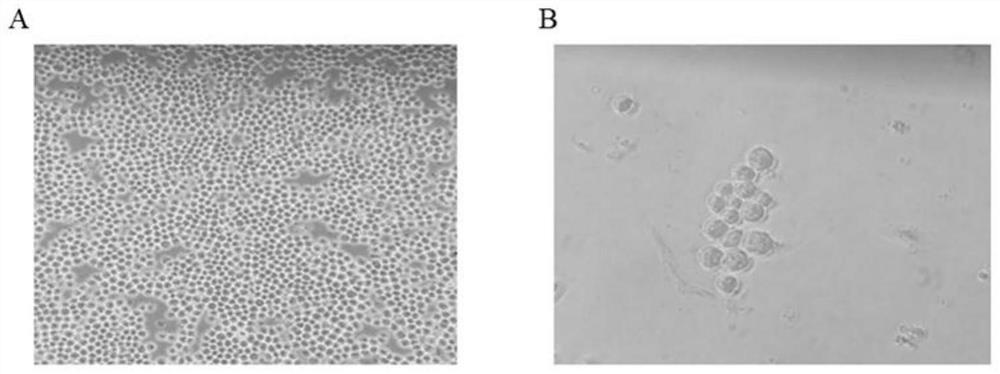Anti-staphylococcus aureus monoclonal antibody, application and immunomagnetic beads containing same
A monoclonal antibody and Staphylococcus technology, applied in the field of pathogenic bacteria isolation, can solve the problems of immunomagnetic bead specificity, capture rate, and sensitivity, and achieve high specificity, high capture rate, and high titer effect
- Summary
- Abstract
- Description
- Claims
- Application Information
AI Technical Summary
Problems solved by technology
Method used
Image
Examples
Embodiment 1
[0071] Recovery, purification, identification of embodiment 1 Staphylococcus aureus bacterial strain
[0072] 1. Recovery and Purification of Staphylococcus aureus
[0073] Take the purchased strains of Staphylococcus aureus ATCC6538, ATCC29213, ATCC25923 and CMCC26003 out of the refrigerator at 4°C, perform aseptic operation, smash the ampoule of the strain, scrape a small amount of solid strain with the inoculation loop, and inoculate it into 3 mL of TSB liquid medium. Place in a constant temperature shaker at 200rpm and increase bacteria overnight at 37°C. The bacterial solution was streaked onto solid LB medium, placed in a 37°C incubator, and cultured overnight. Pick a single colony into 5mL TSB medium, place it on a constant temperature shaker at 200rpm, and increase the bacteria overnight at 37°C.
[0074] 2. PCR identification of Staphylococcus aureus
[0075] Take 500 μL of the above-mentioned purified bacterial solution in a 1.5 mL EP tube, centrifuge at 12,000 rp...
Embodiment 2
[0086] The preparation of embodiment 2 Staphylococcus aureus immunogen
[0087] TSB medium enriched with ATCC6538, waiting for OD 600 When the value is 1.0, use PBS to carry out gradient dilution of the bacterial solution, take the appropriate dilution gradient of the bacterial solution to smear the plate, and perform plate counting.
[0088]The TSB medium was enriched with ATCC6538, ATCC29213, ATCC25923 and CMCC26003 strains of Staphylococcus aureus from different sources. Waiting for OD 600 When the value is 1.0, add formaldehyde with a final concentration of 0.3%, and inactivate at 200 rpm at 37°C for 4 hours. Afterwards, 1 mL of the bacterial solution was taken and placed in a 1.5 mL EP tube, centrifuged at 12,000 rpm for 5 min, the supernatant was discarded, and the precipitate was washed 5 times by centrifugation with PBS. Afterwards, the bacterium solution of 4 strains of Staphylococcus aureus was mixed in equal amounts, and the concentration of the bacterium solutio...
Embodiment 3
[0089] Embodiment 3 animal immunization procedure and serum titer determination
[0090] Each mouse was immunized with 200 μL of emulsified bacterial solution each time, and the interval between each immunization was 2 weeks. The immunization sites were foot pad, subcutaneous, subcutaneous, subcutaneous and muscle in sequence, and a total of 3 mice were immunized. On the 7th day after the fifth immunization, the blood was collected by docking the tail, and the serum titer was determined.
[0091] The specific steps of titer determination are as follows: put the collected blood into a 1.5mL centrifuge tube, let it stand at room temperature for 1 hour, pipette the separated serum, and store it at -20°C. Take OD 600 When the value is 1.0, the fresh bacterial solution of 4 strains of Staphylococcus aureus is inactivated with formaldehyde, and the inactivated bacterial solution is washed 5 times with PBS. After the coating solution was properly diluted with the bacterial solution...
PUM
| Property | Measurement | Unit |
|---|---|---|
| diameter | aaaaa | aaaaa |
| diameter | aaaaa | aaaaa |
Abstract
Description
Claims
Application Information
 Login to View More
Login to View More - R&D
- Intellectual Property
- Life Sciences
- Materials
- Tech Scout
- Unparalleled Data Quality
- Higher Quality Content
- 60% Fewer Hallucinations
Browse by: Latest US Patents, China's latest patents, Technical Efficacy Thesaurus, Application Domain, Technology Topic, Popular Technical Reports.
© 2025 PatSnap. All rights reserved.Legal|Privacy policy|Modern Slavery Act Transparency Statement|Sitemap|About US| Contact US: help@patsnap.com



